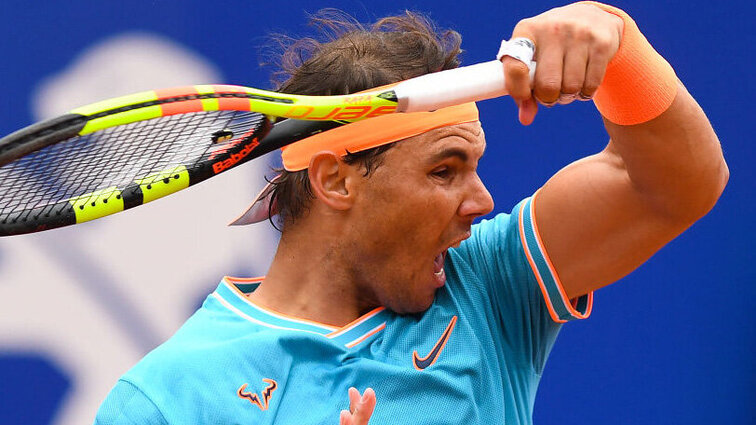Three unexpected levels to improve the forehand in the match
The forehand is in training - and is it in the match? Hopefully not after the tips of our tennis insider!
by Marco Kühn
last edit:
Jun 12, 2020, 05:29 pm

Your training performance was amazing. Good length in the stroke, excellent control, few mistakes. The technical processes happen subconsciously and you are already looking forward to your next tournament match.
With a little nervousness you enter the place. The import runs smoothly from the covering. A few mistakes, every now and then a too short ball - but otherwise the length is in the shot. But as soon as it comes to points, you seem blocked. What you did easily in training the day before yesterday seems far away. You push your forehand, which is actually feared in the club, because your nerves have your punch arm firmly under control.
Why is that? Did you forget tennis in a few days? Or do you need a good psychologist to tie your nerves back on? I want to calm you down at this point. You don't need more coaching hours, nor an expensive psycho-doc to hypnotize you on the couch. In addition to your technique, you also have to be fit in your head so that you can approach your best tennis under competitive conditions. In this article I would like to give you three simple levels that can quickly improve your performance in point game.
The three-stage theory
We stick to our example with your forehand. In many cases, this is the stronger blow, which unfortunately always catches in the tournament. You can use three levels to release this hook:
1) Think
2) Feeling (emotions)
3) Play (performance)
Using the example of your forehand, we go through these three stages one after the other.
Level # 1: thinking
Nervousness can make you be more focused. On the other hand, it can also block you completely. In many cases your thoughts race through your head when you are very nervous. Your thoughts are shaped by reproaches to yourself and comparisons from your training games.
It's really amazing how vulnerable a tennis player is to negative, pulling down and pessimistic thoughts. This is due to the pressure and the competitive situation. You are solely responsible on the pitch. But your thinking is the basis for your emotions, for your feeling on the court. If only negative thoughts circle between the ball changes in your head, then you will find it very difficult to switch on the feelings of trust and self-confidence.
You then no longer play your forehand unconsciously in the back of the corner. Your feeling for this blow is very different from training. You thought a lot less there.
Tip: Be fair to yourself and adjust your expectations. Forgive yourself for mistakes and accept good opponents balls. When you speak to yourself, do it in a motivating and encouraging manner. So you will automatically think more positively.
Try to fool yourself into Rafael Nadal's head. How does he speak to himself? Will he talk badly about himself and his skills? Or does he build himself up and push himself? You know the answer.
Level # 2: Feel
With doubts in your head, your forehand cannot be played safely and consistently. At the latest from the second or third stroke in the rally, you get hectic and your bad feeling only increases.
Then you feel the frustration and anger within you. You keep telling yourself that you can play much better. But your feeling stands in the way of your potential. In these situations, players often try to get the crowbar out of their pockets. However, this means that attempts are usually made even faster to get to the point in the rally. This Harakiri method can produce one or two winners. But the real trust in himself and his playful skills is not won because the negative feeling remains.
Tip: If you want to feel more secure with your forehand, go for sure strokes that you play a little higher on the net. You can also slow down the speed of your forehand strikes and act with more spin. Rafael Nadal regularly practices this step to perfection as soon as he has a small phase of weakness or is nervous at the start of a match.
Level # 3: Play
Your performance is determined in levels one and two. If your thinking and feeling are negative, then your performance will not be to your satisfaction. You will hardly feel control over your forehand. Your error rate increases and you will feel that the opposing field is smaller than a chess board.
At this stage, many players try to optimize their technique. Then they want to stand differently from the ball or they think that the swinging movement does not fit. In these situations, however, the last stage is used. This can cause even more confusion. Thinking can be even more scratched and the feeling more dizzy.
Tip: If you feel that hardly any forehand flies into the field, start at level one. Calm down by speaking fairly to yourself. Concentrate with your improved feeling on the basics: look at the ball, small steps to the ball and meeting point in front of the body. These mental processes improve your sense of the forehand and your performance based on it.
I wish you many forehand winners and few mistakes in your next match.
